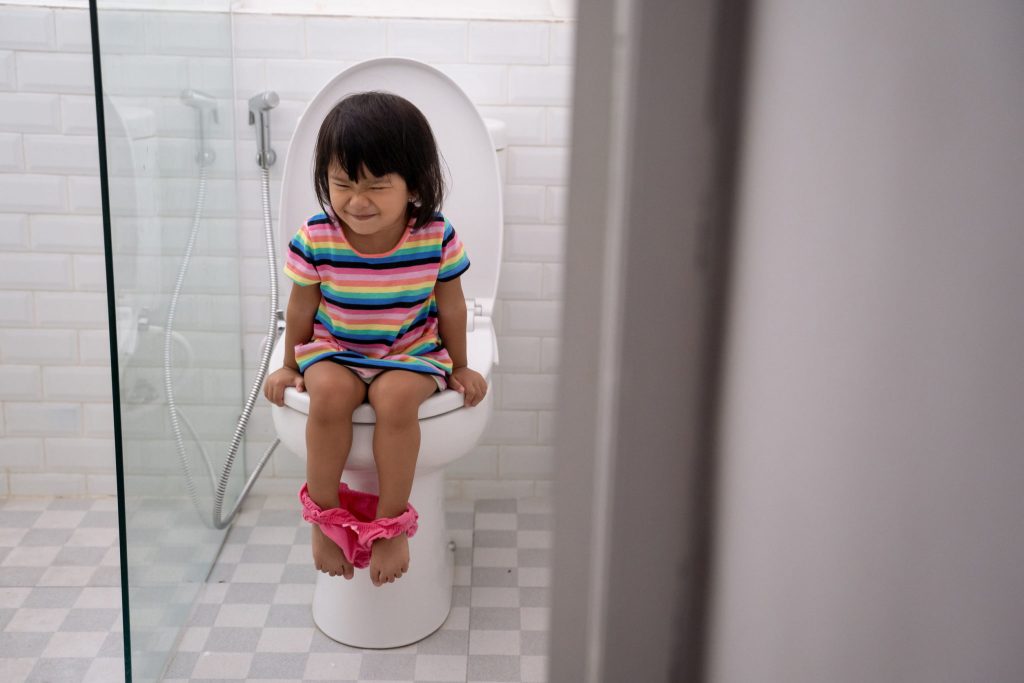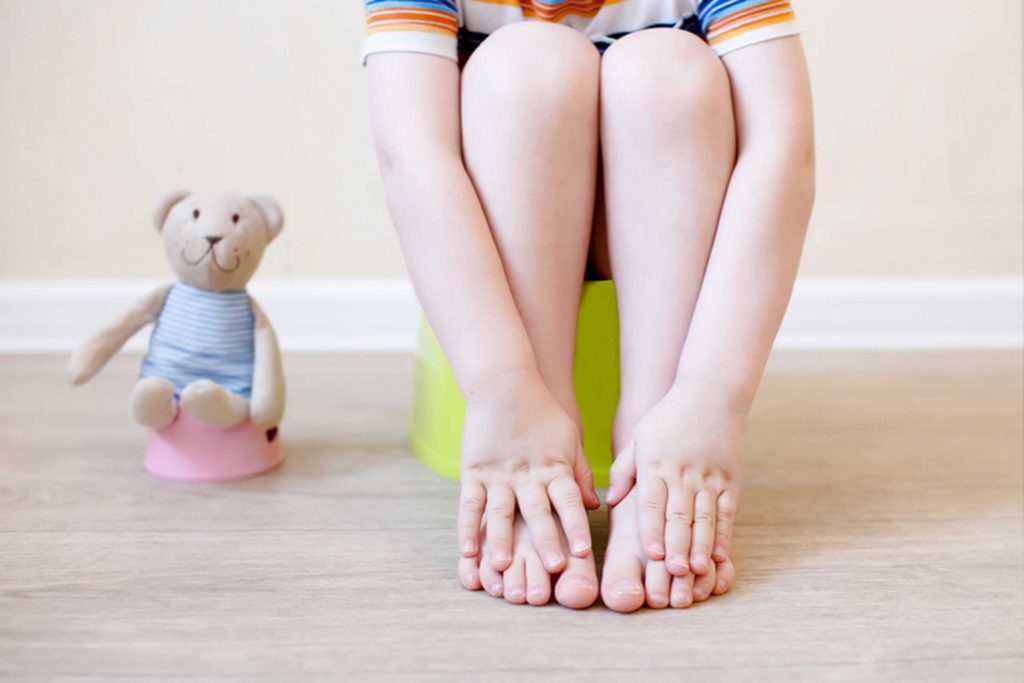Everybody poops. We may not like to talk about it, we generally hide behind closed doors to do it, but everybody does it and obviously, we need to do it to properly eliminate waste from our bodies. And truthfully, who hasn’t felt that sweet sense of relief when you empty your bowels easily and can walk away feeling a little lighter?
Some people even revel in the chance to sit down, take a few deep breaths, and maybe catch up on some reading (or just have a few minutes to hide from your children. Maybe.)
Whereas others, particularly young children, may find the hassle and potential struggle of having a bowel movement unappealing and will do everything they can to avoid hitting the loo, setting themselves up for discomfort and potentially bigger problems down the road.

From the time your new baby is placed in your arms, the tracking of poop begins! You are told to track wet and soiled diapers, with pretty clear guidelines on what constitutes “normal”.
- For exclusively breastfed babies, poops can happen as frequently as every feed, or, at the other end of the spectrum, as infrequently as once per week and still be considered normal.
- Formula-fed babies tend to need to have a bowel movements daily, and by the time your baby starts solid foods, elimination patterns change once again and can become much less predictable.
- In general, for toddlers and preschoolers, bowel movements occurring anywhere from 3 times per day to once every 2-3 days is considered normal.
Signs of Constipation
- Complaining of tummy pain
- Pooping less often than normal
- Straining or turning red in the face when pooping
- Complaining of discomfort or pain when pooping
- Small drops of blood on the toilet paper when wiping, caused by small cracks in the anus called “fissures”
- Small pellet-shaped poops or hard, formed poops with lots of cracks in the surface . (Refer to the Bristol Stool Chart for more info, Type 4 or Type 5 is the ideal)
- Infrequent, very large volume poops
- Fecal incontinence or staining in the underwear (may appear as and be confused with diarrhea), known as encoporesis and associated with fecal impaction
- Delayed urinary continence, including bedwetting
condition causing the constipation. However, if it is not treated properly, it can lead to structural changes in terms of sensitivity of the rectum and anus, setting up a vicious cycle of problems with pooping, making early recognition and treatment essential.
For many children, one experience of painful pooping can lead to them trying to withhold a bowel movement, which leads to further pain when they finally do empty the bowels, thus increasing their anxiety around toileting. For some children, they become so engrossed in their activities that they delay the urge to poop, which increases the size and dryness of the bowel movement, making elimination that much more difficult. And for others, toilet-training too early or with negative motivators can lead to a child delaying the urge to poop for as long as possible, again setting them up for constipation.
Although most cases of childhood constipation are not due to structural abnormalities, in cases where children have withheld bowel movements for some time, or occasionally even spontaneously, we can see what we call “dysynnergia” of the pelvic floor muscles, where instead of relaxing to allow a bowel movement to occur, the pelvic floor muscles contract, causing the anus to stay closed and resist the passage of poop, again leading to a cycle of constipation.
In addition to these factors, not getting enough high-fibre fruits, vegetables and whole grains, not drinking enough water, eating too much dairy (if an underlying sensitivity exists) and being too sedentary can all contribute to pooping problems.
Treating Childhood Constipation
As with most things, childhood constipation is best treated with a multi-pronged approach:
- Pediatric Pelvic Physiotherapy –a specially trained physiotherapist can assess and treat musculoskeletal factors that could be contributing to your child’s constipation (i.e. Pelvic floor muscle strength and coordination, posture and alignment, core abdominal strength and muscle relaxation, and positioning). Your physiotherapist can also educate you and your child on specific lifestyle and schedule changes that may have a big impact on your child’s success on the toilet. Learn more about pelvic health physiotherapy for children.

- Medical intervention – consultation with your physiotherapist and family physician will help to determine if use of a laxative may be beneficial to help your child re-learn how to recognize the urge to poop and how to empty the bowels completely. Your physician will determine proper dosage based on your child’s weight and age.
- Changes at home – increasing physical activity, following a regular toileting schedule, using sticker/reward charts, increasing fluid intake, as well as high-fibre fruits, vegetables and whole grains, eliminating dairy (on a trial basis) and ensuring your child is well-supported on a toddler potty or with a stool under their feet on a regular toilet can go a long way to improving constipation
